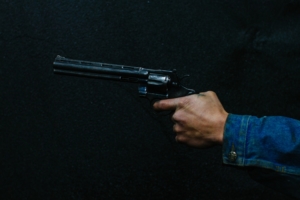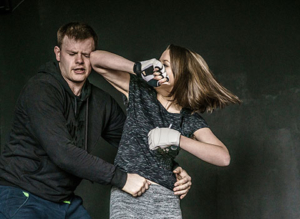Social Cohesion Erosion: The Covid-19 Pandemic and the Fall of Society as We Know It
The Covid-19 pandemic has changed the world as we knew it. From millions of people who have died to inflation running out of control, we still haven’t returned to “normal.” However, these things aren’t the only changes we have seen; we are also seeing a new threat known as “social cohesion erosion.”
 What is this? Well, it’s the basic crumbling of civility in society.
What is this? Well, it’s the basic crumbling of civility in society.
Take a look at the world around you and how people act and think of some of the things that have happened over the past two or three years. For example, supporters of the former President attacked the U.S. Capitol in 2020. This is a direct manifestation of the instability of society that the political climate has created.
Here is another example of what is happening right now in the world. —
Recently, in the Bronx, a 76-year-old woman was attacked and beaten by a group of three in a robbery attempted. The leader? A 13-year-old girl. The young teen was arrested and charged with assault and robbery.
The nature of the attack is shocking. Surveillance video shows that the older woman fought back, but she struggled to keep the door closed. Eventually, the three assailants were able to overpower her. One of them grabbed her purse, and then threw the woman to the ground, where she broke her hip. Unable to move, the suspects began going through her purse, and they took her wallet along with $50 in cash.
Thankfully, a neighbor quickly saw the woman on the ground and ran to help. Since there were surveillance cameras, neighbors were able to identify the attackers, including the 13-year-old ringleader. They said she is known to cause issues in the neighborhood and has had trouble with the police in the past.
More Mass Shootings, Too
In addition to people simply losing civility, there has been an increase of mass shootings since people have been able to come out of Covid-19 quarantine. A mass shooting is described as any shooting event where four or more people are shot.
First, Uvalde, Buffalo, and so many many more Mass Shootings. Then we have an argument outside of a Norfolk, VA pizza place, which led to a shooting that killed two, including a 25-year-old bystander. In Dumas, Arkansas, a gunfight erupted at a car show, killing one and wounding 27. Austin, TX also recently saw a mass shooting during the final weekend of the SXSW festival.
The bad news is that there are no signs of mass shootings letting up, and there have been several more since these. On top of this, the rate of murders has also risen, and from 2019 to now, they are up 30 percent, the highest in over two decades.
What is the reason for this, though? There are, unfortunately, no convincing answers. There are a couple of ideas that experts are floating around, however. One of these is that social isolation during the pandemic has caused a lot of frustration that is coming to the surface. There is also an idea that there is a sense of lawlessness that is coming from events like the murder of George Floyd and other police violence. There were also more gun sales during the pandemic than in years before.
It’s also important to mention that gun crime isn’t the only type of violent crime that is on the rise, nor is the crime rate rising only in areas where police violence has occurred. What is interesting to mention, however, is that though the pandemic affected countries all over the world, we are only seeing this rise in crime in the US…not in Canada, not in the UK, not in Japan, not in France…nowhere else.
We may have a hint of why this is happening if we look at history. If we look at crime in the past, we can see that these crime waves occur when people begin to feel frustration with their government, society, and other people in their country. This frustration can easily cause a breakdown of society.
If we take a look at the homicide rates in both Western Europe and in the US over the past four centuries, we can see that crime rates increase when there is a lot of loss of trust in society as a whole. When we begin to lose empathy for others, crime rises. We saw the same phenomenon in the 60s and 70s in the US as well.
Most of us, of course, don’t go out and commit crimes, but the isolation that all of us have experienced over the past three years makes it so that people are more willing to commit violent acts and break rules.
Written by Robert Siciliano, CEO of Credit Parent, Head of Training & Security Awareness Expert at Protect Now, #1 Best Selling Amazon author, Media Personality & Architect of CSI Protection Certification.

 All of this violence is happening at a time when many states are loosening gun restrictions with something called
All of this violence is happening at a time when many states are loosening gun restrictions with something called  If you are injured or lost, it is imperative that you know how to survive in the woods. Most people don’t understand that even though you should be waiting to be rescued, you have to keep yourself alive, too.
If you are injured or lost, it is imperative that you know how to survive in the woods. Most people don’t understand that even though you should be waiting to be rescued, you have to keep yourself alive, too. We’ve all heard about the man approaching a child, showing her a picture of his “lost” puppy, asking the child to help him look for “Truman” or “Roxie.” The child goes off with the predator – never again seen alive.
We’ve all heard about the man approaching a child, showing her a picture of his “lost” puppy, asking the child to help him look for “Truman” or “Roxie.” The child goes off with the predator – never again seen alive. Scientists have looked at the homicide rate of more than 1,000 species that kill their own, and noticed that there are similar rates of lethal acts. Essentially, this means that the evolution of these species can tell us a lot about how violent the species is.
Scientists have looked at the homicide rate of more than 1,000 species that kill their own, and noticed that there are similar rates of lethal acts. Essentially, this means that the evolution of these species can tell us a lot about how violent the species is. As you first hit the freezing water, you will almost immediately gasp and start hyperventilating. It is important that you remember to get control of your breath and do not thrash around. It can help to remember something called the “1-10-1 principle.” This means that it takes about one minute to gain control of your breathing, and then you have 10 minutes to move before you get too cold. The final one is to remind you that it will take one hour before you become unconscious. Again:
As you first hit the freezing water, you will almost immediately gasp and start hyperventilating. It is important that you remember to get control of your breath and do not thrash around. It can help to remember something called the “1-10-1 principle.” This means that it takes about one minute to gain control of your breathing, and then you have 10 minutes to move before you get too cold. The final one is to remind you that it will take one hour before you become unconscious. Again: Cane
Cane

























